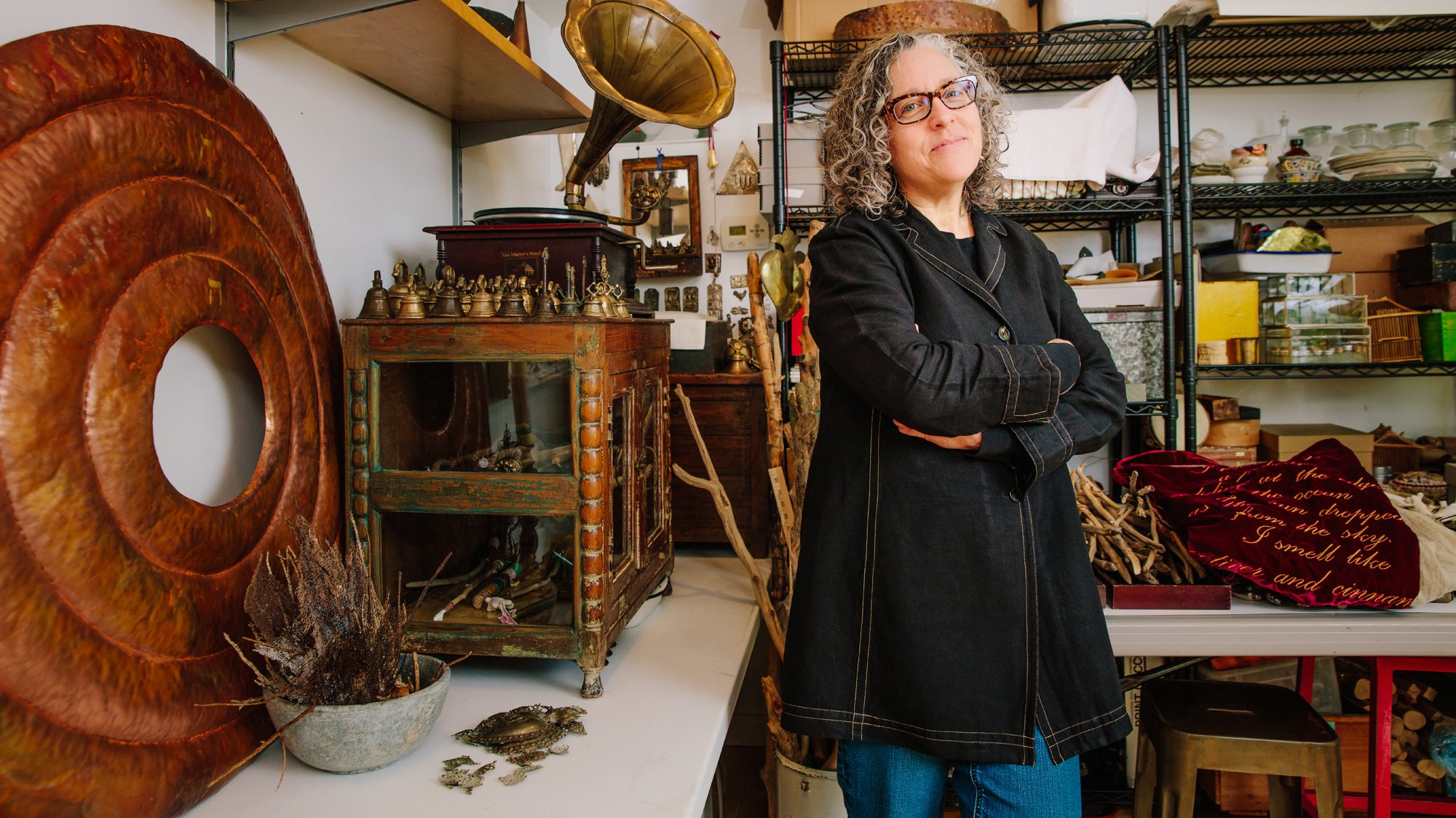Beth Krensky
Credit: Simon Blundel
Beth Krensky is Area Head and Professor of Art Teaching at the University of Utah. She is an artist working in the border zone between social issues and the sacred who creates objects and performative gestures as a contemplative act.
She received her formal art training from the School of the Museum of Fine Arts at Tufts University and MIT’s Center for Advanced Visual Studies. She holds an M.Ed. from the Harvard Graduate School of Education and a Ph.D. in Educational Foundations from the University of Colorado at Boulder. She is also a scholar of youth-created art for social change. Her writing addresses community-based art education, youth activist art, and art for social change. Her co-authored book (with Seana Lowe Steffen), Engaging Classrooms and Communities through Art, is used widely in the field of community-based art education.
In 2022, Krensky was named the Utah Higher Education Art Educator of the Year and in 2019, she was selected as one of Utah’s 15 Most Influential Artists. Yale University recently exhibited a 20-year retrospective of her art. Among her academic honors, she has been awarded the Presidential Scholar, Public Service Professor, and Distinguished Teaching awards from the University of Utah. She was one of five performance art finalists for the 16th Arte Laguna Prize.
Credit: Cam McLeod
Overarching praxis statement:
Recent personal events have given me cause to reflect on what has afforded my life meaning. I have searched for the spaces where I have had the great fortune of both contributing to and receiving from others. These are the places where I have been true to my calling. The theologian Frederick Buechner describes one’s calling as “the place where your deep gladness meets the world’s deep need.” For as far back as I can remember, my deep gladness has come from engaging with others to create art and meaning. Some call this teaching. I call it being part of a community of learners who are willing to inhabit the sometimes uncomfortable space of creativity to remake the world anew. And when I am lucky, time stands still for me and I get lost in the magic of this collaborative grappling we call education.
My teaching philosophy is rooted in Paulo Freire’s notion of co-intentional education, where students and teachers are at once both students and teachers and engage together to create knowledge. Freire wrote that, “Knowledge emerges only through invention and re-invention, through the restless, impatient, continuing, hopeful inquiry human beings pursue in the world, with the world, and with each other (Freire, 1970, Pedagogy of the Oppressed, p. 53).” I strive for my mentoring and teaching to engage in the type of restless and hopeful inquiry that Freire believed had the power to reinvent—or perhaps even repair—the world.
Credit: Josh Blumental
Current art and/or research interest:
My biological, cultural, and spiritual foundations inform what I create, and often relates to the idea of the limen—the space between spaces. The conceptual idea for much of my work is rooted in Gloria Anzaldua’s idea of a bridge as a shifting, intermediary space of changing perspectives.
I have come feel at home in this intermediary space. I try very hard to hold that space open for my myself and my students. It is a free space where risk-taking and envisioning can happen. This envisioning is the first step in transformation.
In his book, The Sacred and The Profane, Mircea Eliade proposed the term hierophany “To designate the act of manifestation of the sacred….that something sacred shows itself to us” (Eliade, 1957, p. 11). My current work is intended to access the sacred when I or others activate my objects through performative gestures.
More about the artist: HERE
Credit: Amelia Walchli
Credit: Josh Blumental





